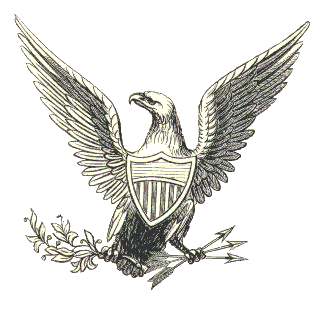
The Battery
A standard Field Artillery battery consisted, at full strength, of six guns. Each gun was attached to a limber pulled by six horses, and was supported by a caission, also attached to a limber pulled by six horses. The caisson carried two ammunition chests (also a spare wheel), and there was one chest on each limber for a total of about 1,200 rounds for the battery. There was also a battery wagon, a forge wagon and an ambulance, for a total of 18 vehicles.
Our particular piece - The Model 1841 12 Lb. Mountain (and Prairie) Howitzer
Originally designed to be packed on draft animals and set up in places where larger field pieces could not be, the versatility of the mountain howitzer kept it in use by the Army until the late 1890's. The Cannoneers
A detachment was one gun and its crew. The Chief of the piece was a sergeant, in charge of the gun; there was a corporal in charge of the caisson, and another who was the gunner that aimed the piece. The "spare men" of the Battery were those who were unassigned, and took care of the horses and equipment. Those who were assigned to the "numbered positions" had a bit of status within the Battery, at least in terms of their own pride. The cannoneers were:
A battery had five officers; one captain commanding, one first lieutenant in charge of each of the three sections, and one second lieutenant in charge of the line of caissons. Caissons and limbers are treated differently, the caissons are held in reserve and move seperately behind the battery. A limber is attached to each gun and holds some ammunition plus the necessary equipments for the service of the piece. The battery also had one quartermaster sergeant, who issued clothing, equipment, and rations and one first sergeant, who was the battery orderly sergeant and the senior NCO. A section consisted of two guns and their crews, and were referred to as "left", "center" and "right".
The bronze barrel weighed 220 lbs. and was carried by one animal, the wheels, axle, and trail by another, and six ammunition boxes were carried by three others.
Two guns were a section and four to six guns made up a battery.
The bore diameter was 4.62" and the guns fired the same assortment of spherical twelve lb. shot and shell that their larger cousins did. The exception being that the canister shot for the mountain howitzer contained 158 .68 caliber lead shot as opposed to 48 1" iron shot for the 12 lb. Field Howitzer and the 12 lb. Napoleon.
The effective range for the guns was 900 yards but they were capable of firing 1400 yards at maximum elevation. In actual practice they were used to support infantry and cavalry most often so long range was not a factor.
There were three variants of the type, those being the original pack carriage and the prairie carriage no's 1 and 2. The prairie carriages were designed to be hauled behind a single animal or when equipped with similarly sized prairie limber, they drawn by a team of two.
The prairie carriages differed from the standard pack carriage in that they had a wider wheel spacing and larger diameter wheels to facilitate being hauled behind the animals, thus making it easier to bring them into play.


